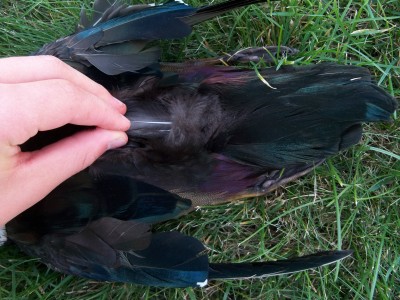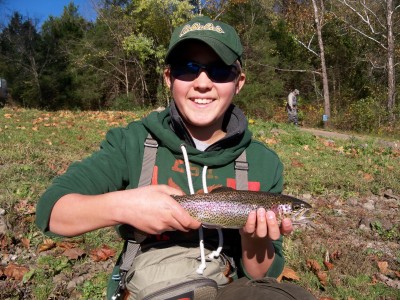Duck season is in full swing in many parts of the country right now. Hunting has slowed down here in Minnesota, but I had a pretty good season and bagged a couple ducks. A nice collection of CDC from mallards, wood duck, and teal is sitting on my tying bench, ready for the long winter. CDC is pretty quick and easy to grab off a bird, and is an outstanding feather for dry flies.
Cul De Canard (or CDC) is one of the best feathers on a duck for fly tiers. It is found near the duck’s preen (urogypial) gland, which releases oils that a duck uses to help waterproof his feathers. Contrary to popular belief, CDC gets its great natural flotation properties primarily from the structure of the feather, not the oils. Micro-barbules extend from the fibers of the CDC feather, increasing surface area and trapping tiny air bubbles when on the water. This makes it a great material for tying flies that float well but hang low in the surface film.
Harvesting CDC
CDC is relatively easy to find on a duck. The preen gland is on the lower back just above the tail feathers. Feel around just above the base of the tail feathers, where you will find a bump. That is the preen gland. Lift up the cover feathers and there you go, CDC. Pluck all the feathers right around the gland, including the oily feathers on the bump, stopping when the feathers become just regular fuzzy down. Put them into a plastic bag, where the oils will distribute throughout the feathers. A mature mallard will usually yield roughly sixty or seventy plus useable feathers up to two inches long. Any waterfowl that ends up in your bag at the end of the hunt will be good for CDC. I favor the smaller CDC from a wood duck, especially for tiny flies that require a thinner feather shaft. Geese also have some great CDC, with some giant feathers up to three inches long that are great for larger flies.

It’s probably a good idea to freeze the feathers to get any critters out before putting them on the shelf. A cycle of one week in, a few days out, and another week or two in the freezer should remove any troublesome bugs. Any cold resistant eggs that survived the first session will hatch in the break, and then die in the next freeze. I have been doing this with all my fur and feathers that I harvest for a couple years now, and I haven’t had any problems with bugs.
Uses of CDC
CDC, one of my favorite materials for tying dry flies, is very versatile. The flowing fibers of CDC on a dry fly might suggest a trailing shuck, a crippled wing, or simply movement. It adds a nice trigger and floats like a cork. CDC is a great material for fooling picky trout on flat water. Feathers from a wild bird are almost always better than what you can get commercially. There is much more variety in feather types, and the quality is usually quite good.
CDC Comparadun- One of my favorite CDC flies is a comparadun-style BWO or midge, which works very well in the tail of pools when trout are slurping tiny midges. The comparadun-style wing has a great silhouette and floats fairly well.
Emergers- A down-wing is deadly on emergers (F-Fly), producing a very life-like fly that floats low in the surface film. CDC makes a great wing on an RS-2 style fly, adding some motion and life. Stick it in a dubbing loop and wrap it like hackle on a parachute to create an excellent emerger.
Bodies- You can also wrap it as a body, such as in Hans Weilenmann’s CDC and Elk. The fibers make a good dubbing, too.
Nymphs- One application that is gaining popularity and often overlooked is using CDC on nymphs. Once the feathers get thoroughly wet and the barbules collapse, it produces a very tantalizing motion to the fish in the water. It’s great for a soft hackle collar on nymphs, or to add some motion to a wing.

I should also add that floatant is usually a bad idea with CDC flies. The paste or liquid stuff collapses the barbules on the feather, leaving it unable to trap air. If the fly starts to sink, just dry out the fibers really well and false cast a few times. CDC is usually best in slower water, but if you must add floatant for fishing broken riffle water, use a powder like Frogg’s Fanny or something similar. In most situations, the feathers float very well without floatant and rarely need it, and a good drying is all you need to get it floating again.
So, next time you bag a few ducks, or you have a friend that hunts, grab some CDC. It just might become a standard in your dry flies. A supply of CDC from about two mallards should easily last you the winter of tying.
Tight Lines,
Conner
The DIY Fly Fishing Series
We make a lot of our gear here at 3 Brothers Flies. We tie our own flies, build fly tying tools, harvest and preserve fly tying materials, and tie our own leaders. It is common to over-analyze fly fishing and gear. Sometimes simpler is better. This DIY fly fishing series shows that a lot of fly fishing gear can be built by yourself for very little money and time.

